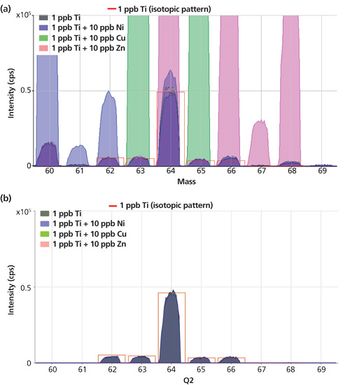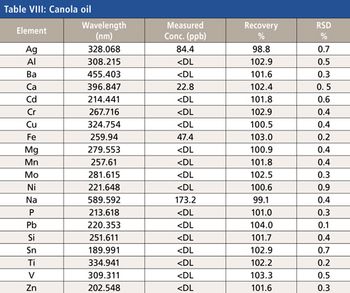
Special Issues
Titanium (Ti) is used in lightweight alloys, catalysts, cutting and grinding tools, and medical implants. Most Ti is refined into the white pigment titanium dioxide (TiO2), used in paint, paper, plastics and food, and in consumer products such as toothpaste and sunscreens. TiO2 is considered inert and safe, but TiO2 nanoparticles are much more reactive and bioavailable, so they may have adverse effects on human health and the environment. There is a need for analytical techniques and methods for accurate, low level analysis of Ti in environmental samples, biological tissues, and other samples. This application is difficult for conventional quadrupole ICP-MS because of the presence of matrix-based spectral interferences on the isotopes of Ti. In this paper, we show how the interferences can be removed using tandem ICP-MS (ICP-MS-MS). This allows sub-ng/L (ppt) detection limits to be achieved, and ensures that accuracy is maintained in the presence of complex sample matrices



